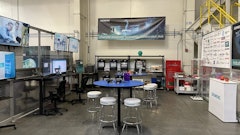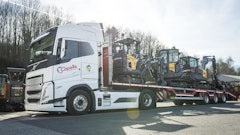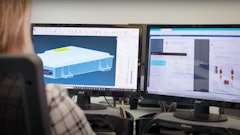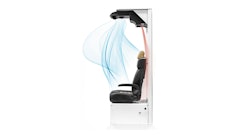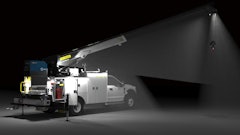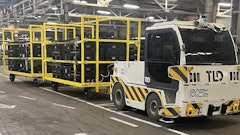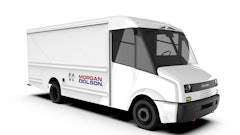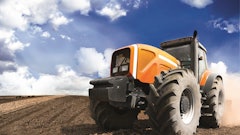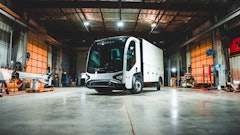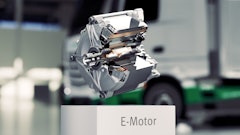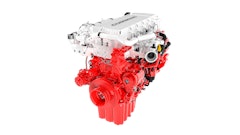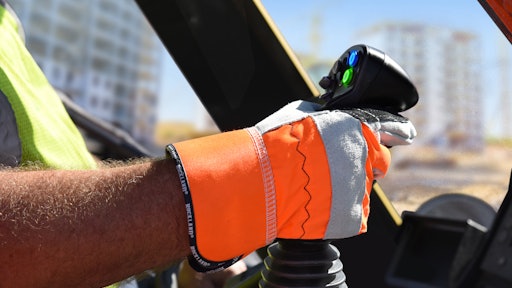
The No. 1 cause of workplace injury is overexertion, which can happen while lifting, pushing, pulling, holding, carrying or throwing objects. In recent years, these injuries cost businesses $13.7 billion, or 23.5 percent of the overall national burden, according to the Workplace Safety Index. To prevent overexertion-related injuries, it is recommended that companies provide their employees with ergonomic equipment.
This article details some of the key considerations when designing and choosing an ergonomic joystick.
1. Anthropometrics
Ergonomics is the design of a product to match the individuals that use it; however, because everyone in the world is unique, ergonomics can often be subjective. Anthropometry, the science that defines physical measures of a person’s size, form and functional capabilities, according to The National Institute for Occupational Safety and Health, is a way to quantitatively define the ergonomics of the demographic your product is meant for.
The first step is to identify the demographic you’re targeting and determine what physical dimensions are important in your application. In joysticks, these are generally the arms, hands, thumb, wrist and fingers. By using anthropometric databases, smallest and largest physical dimensions for a population are evaluated, and a product is designed that can be used comfortably by both. By using in-house 3D printers, rapid prototypes can be developed and shared with expert users early in the design process to validate the dimensions and get feedback specific to different industries, machines and applications.
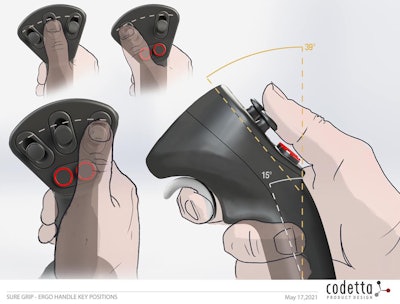 Figure 1. Faceplate angle and shape.Sure Grip
Figure 1. Faceplate angle and shape.Sure Grip
2. Faceplate
As shown in Figure 1, the faceplate is an example of a design that reflects user feedback. After accounting for a range of thumb lengths and sizes and considering feedback from expert users, a unique, dual-angle faceplate that moves the upper controls closer to the user’s thumb. This reduces the need to reach, which improves control and minimizes strain on the thumb. The faceplate angle also matches the natural resting position of a thumb relative to the rest of the hand.
A triangular shaped faceplate, a feature of some handles, matches the natural arc of the user’s thumb, so they can easily reach the faceplate functions with little to no effort. The spacing between components has also been optimized to prevent accidental activation with and without gloves.
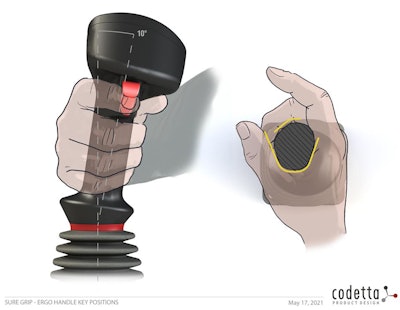 Figure 2. Example of the handle angleSure Grip
Figure 2. Example of the handle angleSure Grip
3. Right and Left Handles
In some applications, such as a single, centrally positioned joystick, it’s useful to have a handle that can be used with either the right or the left hand (for example, universal or electronic handles). While in other applications, right and left-hand specific handles provide better comfort and control. When it comes to ergonomics, right and left-hand specific controls are generally superior.
In development of some joysticks, through studies and feedback sessions, the natural position of a user’s wrist when holding a joystick is inclined inward by approximately 10 degrees relative to the forearm.
As shown in Figure 2, this was taken into account in the joystick and this angle was built into the grip. This provides a more comfortable operating position and simplifies the cab design and installation process by eliminating the need for complicated mounting platforms or armrests.
One key piece of feedback during development was that many ergonomic right and left handles are directive, forcing users to hold the handle in one way. In real-use situations, being able to change the grip style can help prevent fatigue and injury. With some joysticks, this feedback was included and designed the handles to be comfortable in different hand positions. For example, the joystick is comfortable to use whether the user wants to rest their hand on top of the grip while working or hold the joystick by its shaft with the hand, naturally cradled by the hand rest at the base of the grip.
4. Configurability
Configurability is another key characteristic of an ergonomic handle because different applications need different controls. Multiple faceplate and trigger control options allow designers to select the perfect layout for the application.
In some joysticks, new high-visibility LED buttons have been introduced. They are visible in full sunlight but can be adjusted to the right brightness for the application to reduce strain on the user’s eyes. The RGB LEDs can be configured to any color, customized to provide user feedback and are available with a custom graphics, making machine use intuitive and efficient.
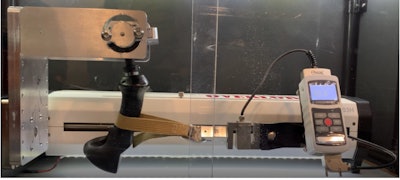 Figure 3. Overload testing.Sure Grip
Figure 3. Overload testing.Sure Grip
5. Durability
Ultimately, the benefits of an ergonomic handle are useless if the handle is not durable enough to withstand the environments and applications in which it’s used. For this reason, durability is a key consideration when choosing any handle.
Joysticks must undergo stringent testing to the highest industry standards to make sure they perform in the most extreme situations. For example, some joysticks are tested to withstand temperatures between -40˚C and +85˚C, high amplitude vibration and shock, salt fog exposure, and cycled to 5 million cycles or 20 million operations. The joystick and shaft should be able to withstand over 100 Nm of force.
 Figure 4. IP-X9K testingSure Grip
Figure 4. IP-X9K testingSure Grip
Some joysticks are fully enclosed, rated to IP69K above the panel and IP67 below the panel. This means the entire joystick is waterproof and completely protected from dust, dirt and liquids.
6. Ease-of-Use
Ease-of-use is another important benefit that goes hand in hand with ergonomics. Many design techniques are available to ensure a joystick’s handle helps reduce operator fatigue and the risk of repetitive strain. For example, using an intuitive trigger rather than buttons or rollers better fits an operator’s natural motion. And capacitive operator presence sensing that does not require mechanical activation should be included.












